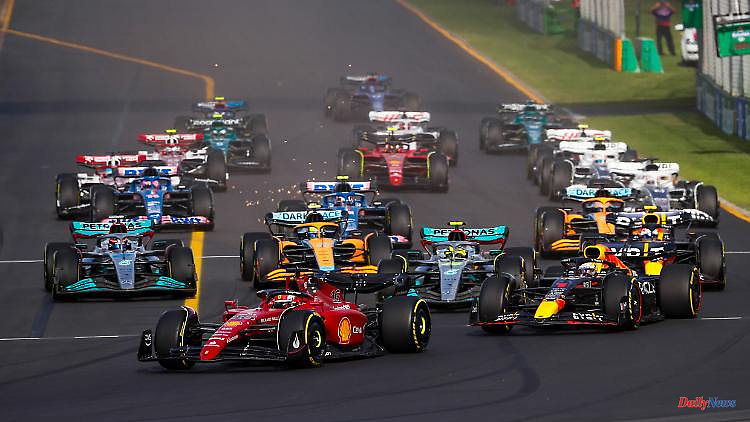Some Formula 1 drivers even fear for their health, teams complain about loss of time: porpoising is currently driving the racing series like no other technical problem. It's about the rule amendment 2022, a new kind of hopping of the cars over the asphalt - and porpoises.
What does the porpoise have to do with Sebastian Vettel's Aston Martin? Not much at first glance. One eats fish, hunts with ultrasound and is one of the fastest marine mammals. The other eats petrol, and in Formula 1 it's actually much too slow to hunt. But the porpoise hops through the water when it has to go ahead, and Vettel's car behaves in a very similar way on the long straights - and because Aston Martin is not the only one to have these problems, there is now a word for it in Formula 1: porpoising, based on the English word porpoise. just porpoise.
"It slowed us down," Aston Martin's technical director Andy Green recently told the specialist magazine auto motor und sport: "To be honest, it slowed everyone down." The 2022 rule amendment has fundamentally changed the aerodynamics of the cars. For the first time since the 1980s, the ground effect is used again, i.e. a large part of the downforce is generated via the underbody. However, the teams already had the problem of bouncing during the first test drives: The underbody is sucked extremely close to the asphalt, the contact pressure breaks off, causing the car to jump up again and everything starts all over again.
Some teams have bigger problems than others, Aston Martin, for example, "loses a massive lap time," says Green. The world champions from Mercedes also struggle a lot with porpoising, it's one reason why record champion Lewis Hamilton hasn't arrived this season at all. So for the last two months, numerous Formula 1 drivers have been hopping across the asphalt at a speed of 300, race after race. And because a stiffer suspension can mitigate the problem, they're also extremely bumpy and hard going over the bumps in the track.
This worries some pilots. "What price should a Formula 1 driver pay physically in his career," asks Ferrari driver Carlos Sainz, "we have to talk about that." After only two months of the season, he can already feel the first effects of this vehicle philosophy on his back and neck, and "you don't even have to ask the experts" about the long-term consequences.
Some fellow drivers smile at these concerns, but others are reluctant to dismiss them. Mercedes driver George Russell refers to studies from other sports, in soccer and American football, for example, the risk of possible brain damage has long been underestimated. The state-of-the-art Formula 1 must also adequately illuminate its own risks.
"Every sport," says Sebastian Vettel, "demands a price from the body. The strain on the spine and the intervertebral discs is particularly high for us." However, he does not expect a decade of porpoising. "The problem will not last forever," says Vettel, "the teams will get it under control." If only to finally be able to drive fast again.
6












